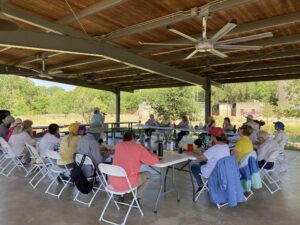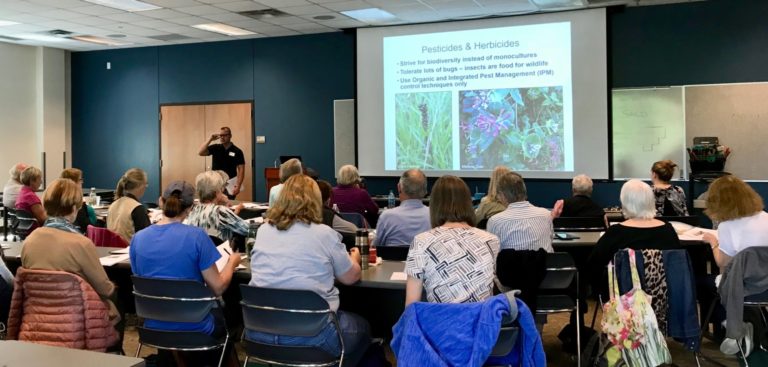We love to learn about native plants and their benefits. We share our passion for and knowledge of native plants with our community via meetings, classes, community gardens, and biannual native plant sales.
Monthly Meetings with Guest Speakers
We meet on the 4th Monday of each month, except July & December. Meetings are free and open to the public. Guest speakers, experts in their fields, share their knowledge of a wide range of topics related to Texas native plants — what to plant, wildlife, pollinators, the environment and everything in between. (Please let us know if you have an idea for speaker.)
You will find details of the upcoming speaker on the New Braunfels page. See News for details of the upcoming meetings.
Field Trips
Field trips are a great way to learn about local resources and plants, while getting to know other members. Our chapter takes awesome field trips around New Braunfels, the Hill Country and beyond. Trips are planned and led by a chapter committee. Join them to help plan the fun!
Have an idea for somewhere to visit? The committee is always looking for location ideas and volunteers to lead attendees on fun and educational outings. Contact us with your idea.


Native Plant Sales
Our chapter sells native Texas plants to raise chapter funds and to advocate for and educate the public about native plants. Our sales are held twice per year, in the spring and in the fall, at locations in New Braunfels.
We announce sale dates on our New Braunfels page. As we get close to the day, check the calendar for updates and anticipated inventory.
Where to See Native Plants
The New Braunfels NPSOT Chapter created and/or maintains a number of community gardens:
Pioneer Memorial Native Plant Garden in Landa Park
Landa Family Memorial Garden (Native Butterfly/Pollinator Garden) at Landa Park

Training
As a chapter, we hosted a seed workshop at the Comal Headwaters.
Twice a year we offer the Natives 101 class with the Comal Headwaters.

Native Landscape Certification Program
NLCP workshops are held at locations across Texas throughout the year. Each workshop combines classroom instruction with outside fieldwork providing instruction in native plant identification (trees, shrubs, forbs and grasses) and their use in the landscape. We also identify common invasive exotics and appropriate native plant alternatives.

Get Involved!
There are many ways you can get together with NPSOT-New Braunfels chapter members to learn about native plants, advocate for native plants, and share your knowledge and interests with other members and the public.
Volunteers can often earn volunteer hour credits for other organizations. Contact your organization to see if your NPSOT project qualifies.

